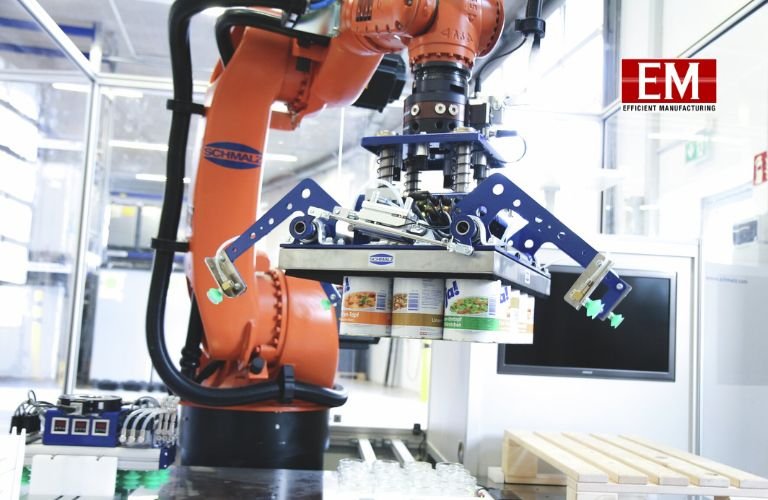| Rama Krishna, Co-founder and CEO, EndureAir
India is rapidly emerging as a global player in the drone manufacturing industry, showcasing impressive growth and application across various cross-functional industries. As drones, or Unmanned Aerial Vehicles (UAVs), gain prominence in defence, government, commercial, and recreational, India’s strategic initiatives and robust regulatory framework are paving the way for a thriving ecosystem.
Drones are flying robots operating without an onboard pilot, controlled remotely or programmed for autonomous flight. According to Statista reports India’s UAV market would witness an annual growth rate of 5.78%, driven by advancements in robotics, artificial intelligence, automation, and materials science. These technological advancements have enabled drones to provide solutions to diverse problems in defence, logistics, power, agriculture, infrastructure, and mining sectors, being profitable and productive.
The Indian UAV market is categorized into three segments: Original Equipment Manufacturers (OEMs), End Users, and Aftermarket. The diversity of UAV types, including fixed wings, rotary wings, medium-altitude long-endurance (MALE), high-altitude long-endurance (HALE), and combat aerial vehicles, reflects the industry’s continuous innovation and product optimization.
India’s drone manufacturing is vibrant, with numerous startups and established players entering the market. In FY 2020, the Indian UAV industry was valued at US$ 830 million and is projected to grow at a CAGR of 14.5% between 2021-26. This growth trajectory is fuelled by the augmented adoption of technology across sectors, both domestically and internationally.
Rama Krishna, Co-founder and CEO, EndureAir

Prominent drone companies in India include Ideaforge Technology, IoTechWorld Aviation, EndureAir, Adani-Elbit Advanced Systems India and others. These companies are at the forefront of developing innovative UAV solutions, contributing to the industry’s expansion.
The pandemic has accentuated the versatility of drones, which played a crucial role in healthcare product delivery or logistics, agricultural and commercial. Acknowledging the growth of drone technology, the Indian government has implemented a series of reforms to promote indigenization and foster a conducive environment for drone manufacturing.
The liberalized regulatory framework and manufacturing incentives aim to create a comprehensive drone ecosystem, encompassing the design and manufacture of drone components, assembly of UAV products, and development of software applications and counter-drone technologies. According to NITI Aayog, India’s UAV market is expected to reach US$ 50 billion over the next 15 years, with drones replacing 80% of operations currently performed by manned aircraft.
The Indian government is committed to transforming the country into a global drone hub by 2030. Some of the Key initiatives include Drone Airspace Map 2021, Drone Certification Scheme 2022, Drone Import Policy 2022, and Drone (Amendment) Rules 2022 with Promoting Kisan Drones where the government is actively providing subsidies for farmers to adopt drone technology.
The strategic partnership between the United States and India is a testament to the global significance of India’s drone industry. The US government’s decision to sell 31 armed drones to India, valued at nearly US$ 4 billion, highlights the growing collaboration between the two nations. This partnership is expected to enhance India’s defence capabilities and bolster the country’s position as a global drone manufacturing hub.
The Indian government’s Drone Rules 2021 marks a significant shift towards a more liberal and conducive regulatory framework. Key enactments include the reduction in licensing fees, regardless of drone size, and the removal of the pilot license requirement for non-commercial micro and nano drones. The regulations also moderate various approvals and certificates, simplifying the compliance process for drone pilots. Additionally, the development of drone corridors for cargo deliveries and the establishment of a drone promotion council to facilitate business communication further underscore the government’s commitment to fostering innovation and growth in the drone industry.
These reforms aim to streamline processes, reduce compliance gaps, and encourage both domestic and foreign investments in India’s drone industry.
The PLI scheme, launched in August 2021, aims to boost indigenous manufacturing of drones and components. With an outlay of Rs. 120 crore (US$ 16.06 million) over three years, the scheme is expected to double the combined sales turnover of Indian Drone manufacturers. The government anticipates attracting investments worth Rs. 5,000 crore (US$ 669.07 million) and creating over 10,000 job opportunities in the next three years.
The new drone laws have spurred private sector involvement, with numerous companies and government bodies partnering to advance technology, develop products and attract funding. Notable examples include Swiggy’s collaboration with ANRA Technologies for BVLOS drone food deliveries and DCM Shriram Industries’ investment in Turkish drone manufacturer Zyrone Dynamics. These partnerships are set to enhance India’s drone capabilities and expand market reach.
India’s journey to becoming a global hub for drone manufacturing is corroborated by strategic government initiatives, technological advancements, and robust international collaborations. The liberalized regulatory framework and PLI scheme are set to spur significant growth, making India a competitive player in the global drone market. As the industry scales up, it promises to create considerable employment opportunities, foster economic growth, and support various sectors with innovative drone solutions. The way ahead for India’s drone manufacturing industry is auguring favourable, with the potential to achieve a remarkable turning point by 2030.












